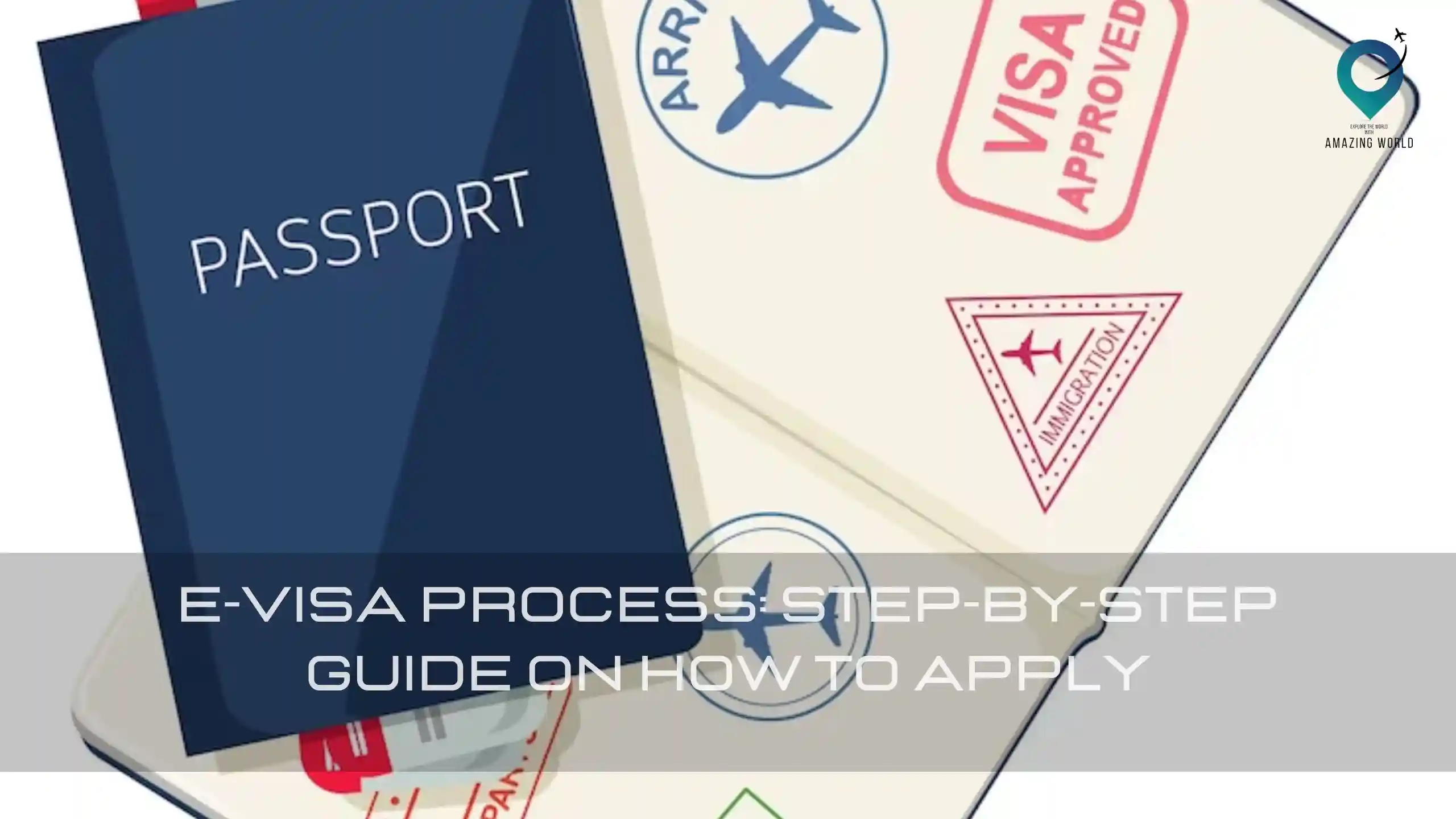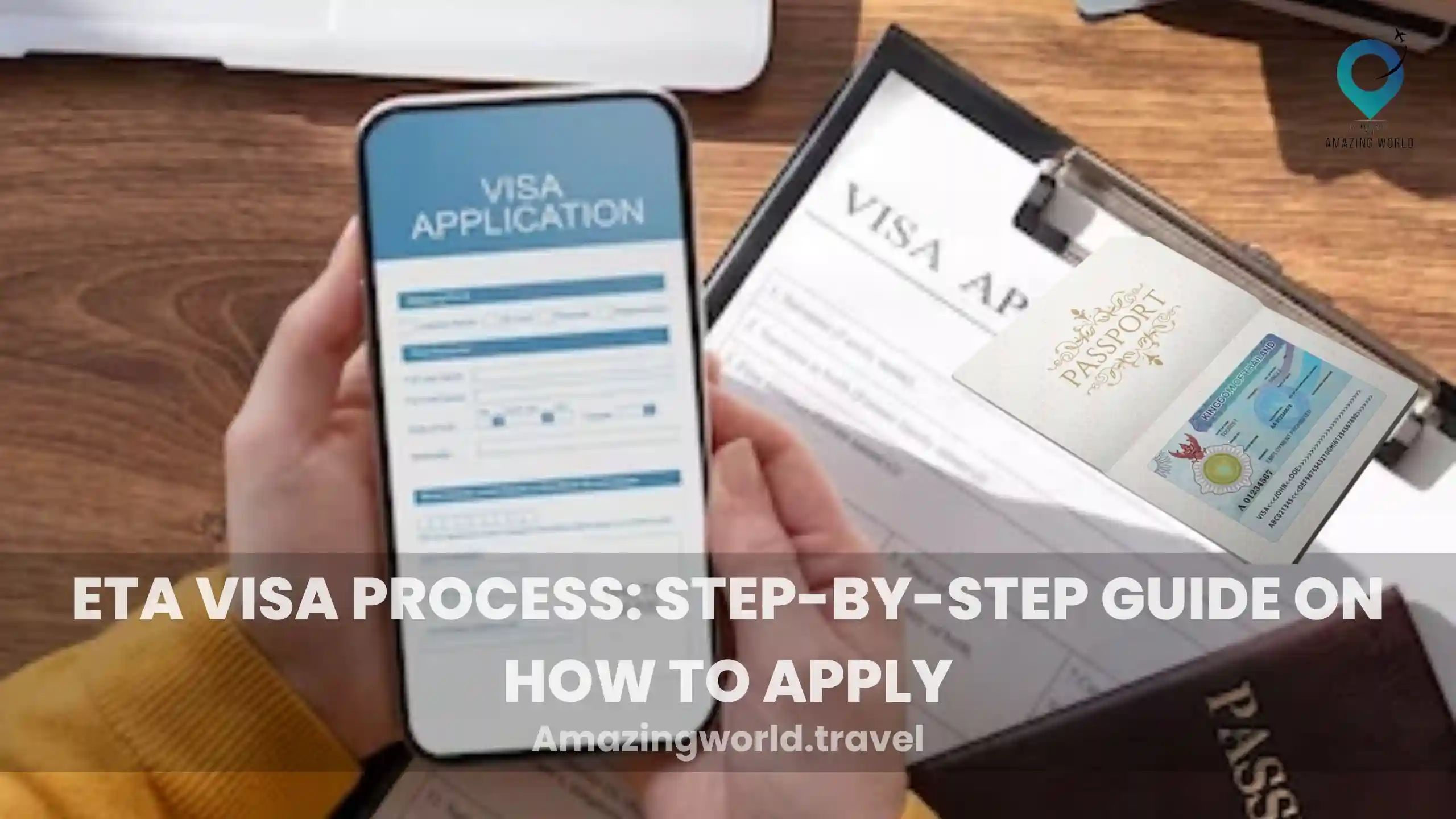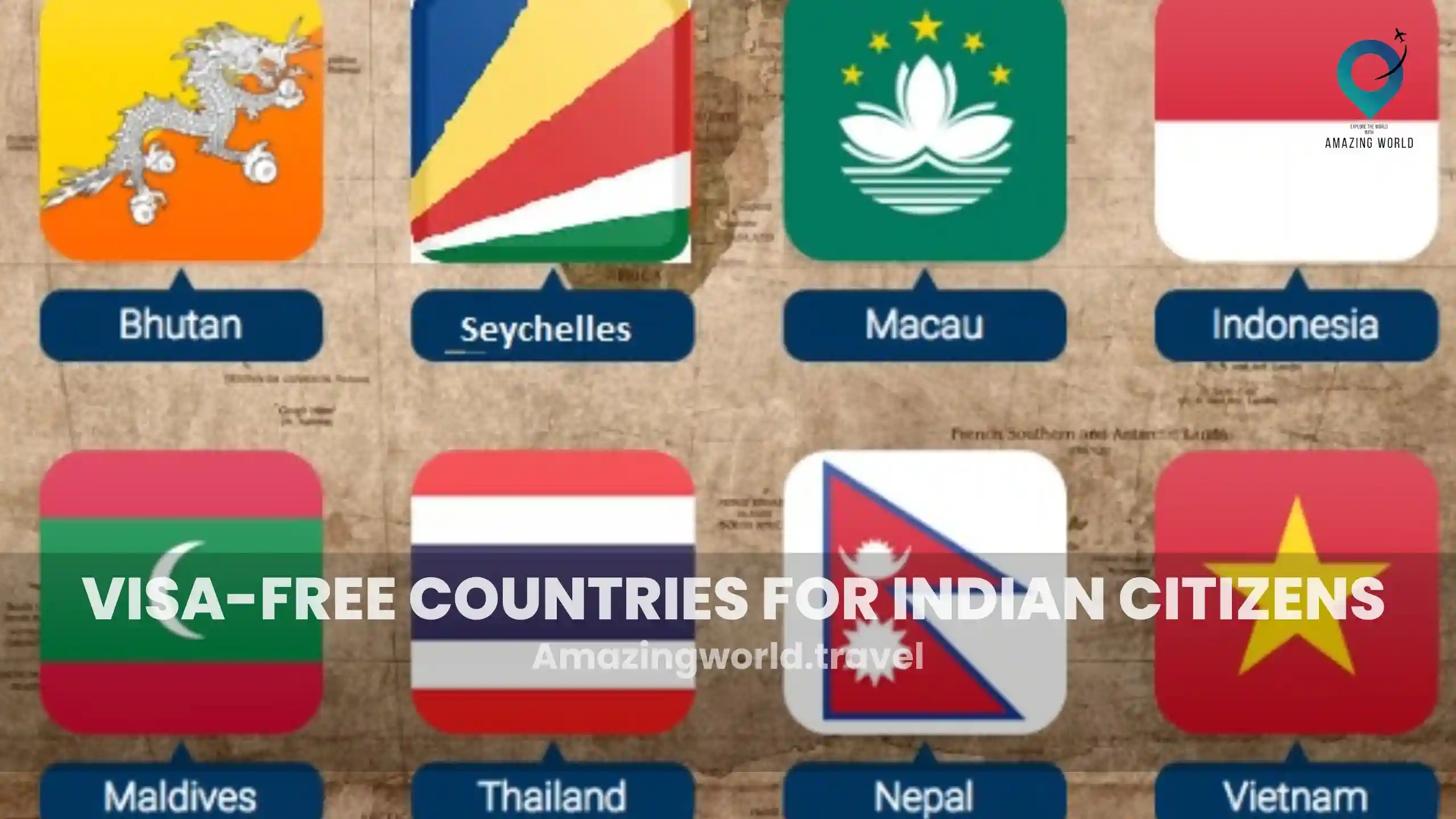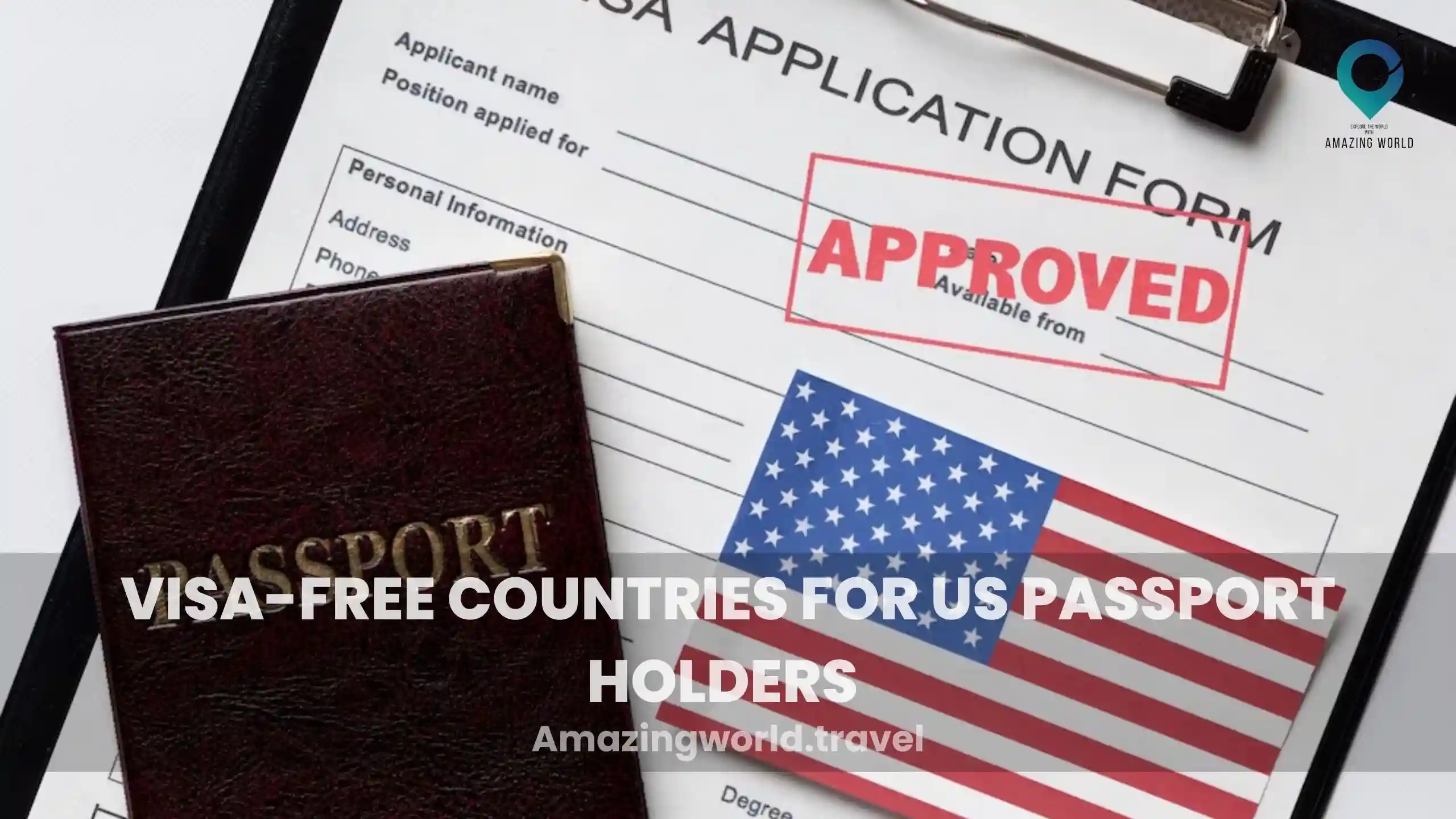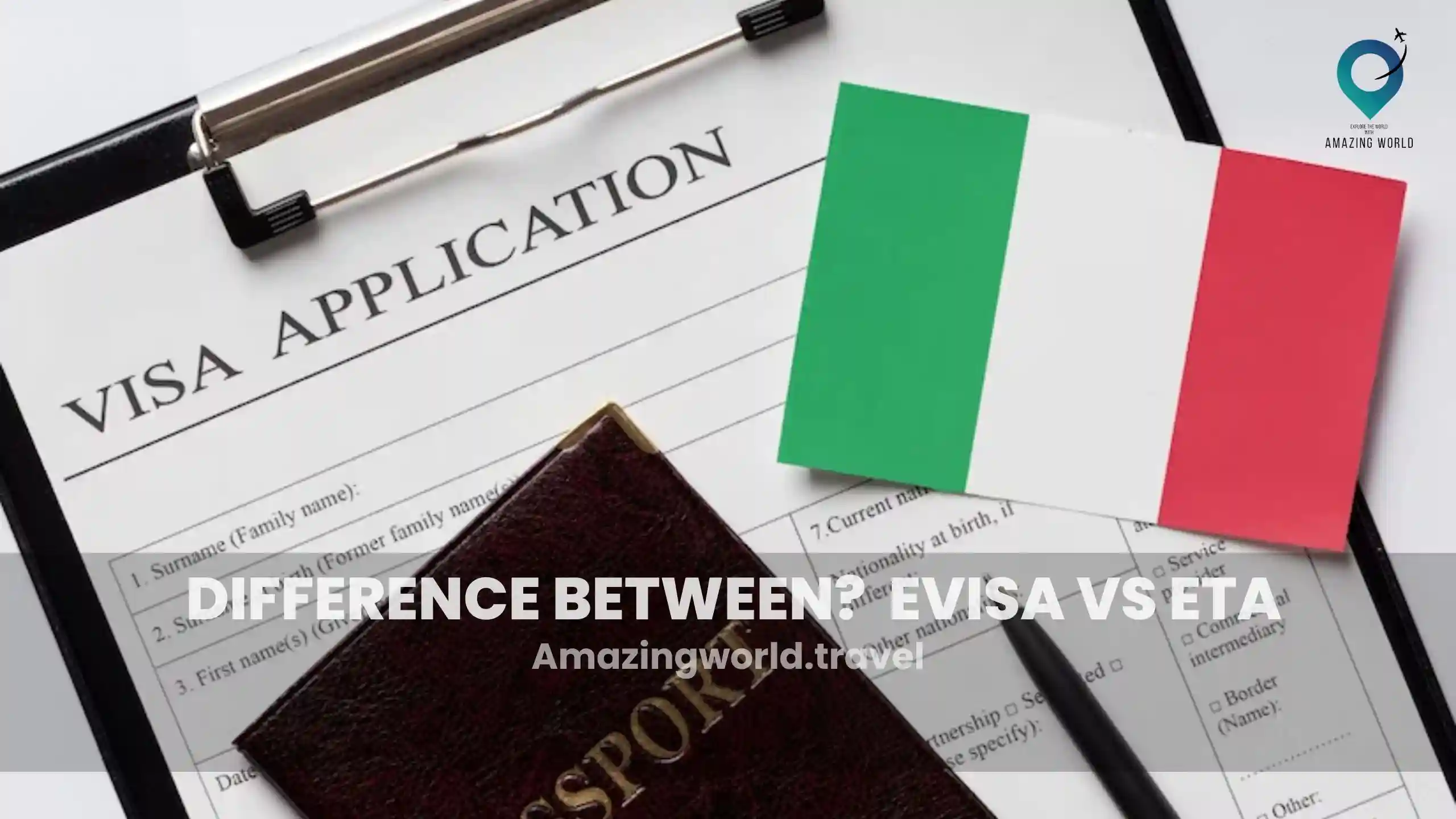E-Visa Process: Step-by-Step Guide on How to Apply

Attention Travelers! Discover the hassle-free way to obtain your visa with our comprehensive step-by-step guide on the E-Visa process. Whether you’re planning an exotic adventure or a crucial business trip, our guide will walk you through each stage, from application to approval. Say goodbye to long queues and tedious paperwork, and say hello to the convenience of applying online.
In this article, we will explore the types of E-Visas, required documents, processing time, validity, costs, and more. So, grab your passport and get ready to embark on a seamless visa application journey. Let’s dive into the world of E-Visas and unlock the gateway to your dream destination!
What is an e-Visa?
An e-Visa, short for an electronic visa, revolutionizes the way travelers obtain their travel documents. It is a digital visa that allows individuals to apply and obtain their visas online, without the need to visit an embassy or consulate.
With just a few clicks, you can complete the entire visa application process from the comfort of your own home. The e-Visa system streamlines the traditional visa process, eliminating the hassles of paperwork and long queues.
It offers a convenient and efficient solution for travelers seeking entry into a foreign country for various purposes, including tourism, business, or transit. Say farewell to the traditional visa headaches and embrace the simplicity and convenience of the e-Visa era. Get ready to embark on your journey hassle-free with this innovative digital travel document.
Types of E-Visa
When it comes to e-Visas, different countries offer various types depending on the purpose of your travel. Here are some common types of e-Visas you may come across:
- Tourist e-Visa: This type of e-Visa is designed for travelers who plan to visit a country for tourism and leisure purposes. It allows you to explore popular attractions, immerse yourself in the local culture, and experience the country’s natural wonders.
- Business e-Visa: If you’re traveling for business-related activities such as attending meetings, conferences, or exploring potential business opportunities, a business e-Visa is the one you need. It enables you to engage in professional activities during your stay.
- Transit e-Visa: For travelers who have a layover in a country and need to pass through its borders while en route to their final destination, a transit e-Visa comes into play. It allows a short stay in the country for the purpose of transit.
- Work e-Visa: Some countries offer e-Visas specifically for individuals seeking employment opportunities within their borders. A work e-Visa grants you the legal right to work and stay in the country for a specified duration.
- Student e-Visa: If you’re planning to pursue your education in a foreign country, you may need a student e-Visa. This type of e-Visa is issued to students enrolled in recognized educational institutions to study full-time.
- Medical e-Visa: For individuals seeking medical treatment or procedures abroad, certain countries offer medical e-Visas. This visa allows you to enter the country for the purpose of receiving medical care.
These are just a few examples of the types of e-Visas available. The specific types and their eligibility criteria may vary from country to country. It’s important to check the requirements and restrictions of the destination country’s e-Visa program to ensure you choose the correct type for your travel purpose.
E-Visa Application Process
You can apply for an E-Visa by going to the official website of a specific country. You will receive an email address verification message after submitting the online application form and making the required payment. The e-Visa will be electronically sent to your verified email address once you have verified your email address. Below is the process of how to apply e-visa.
- Visit the official e-Visa website: Each country offering e-Visas usually has an official website dedicated to the visa application process. Visit the website of the country’s immigration department or embassy to access the online application portal.
- Select the visa type: Identify the specific type of e-Visa that corresponds to the purpose of your travel, such as tourism, business, or transit. The website will provide information about the available e-Visa types.
- Review the requirements: Familiarize yourself with the requirements for the e-Visa application. The website will outline the necessary documents, such as a valid passport, passport-sized photographs, application forms, and supporting documents (e.g., flight itineraries, hotel bookings, and invitation letters).
- Fill out the application form: Complete the online application form accurately and provide all the required information. This typically includes personal details, travel information, and passport information. Make sure to double-check the information before submitting the form.
- Upload the documents: Scan or take clear digital copies of the required documents and upload them to the online application portal. Ensure that the documents meet the specified size and format requirements.
- Pay the visa fee: Process the payment for the e-Visa fee using the available payment methods on the website. The fee amount will depend on the country and the type of e-Visa. Keep a record of the payment confirmation.
- Submit the application: Once you have completed the application form and uploaded the necessary documents, submit your application online. Some countries may provide an application reference number or confirmation email upon submission.
- Wait for processing: The immigration department or embassy will review your application and documents. The processing time can vary, ranging from a few days to several weeks. Check the website for estimated processing times or contact the relevant authorities for further information.
- Receive the e-Visa: If your application is approved, you will receive the e-Visa via email or as a downloadable document. Print a copy of the e-Visa and keep it with your passport. In some cases, you may also be able to check the status of your application on the e-Visa website.
It’s important to note that the specific steps and requirements may vary between countries, so it’s essential to refer to the official website of the country you plan to visit for accurate and up-to-date information on the e-Visa application process.
Documents Required for an E-Visa
The documents required for an e-Visa application can vary depending on the country and the type of e-Visa you are applying for. However, here are some common documents that are often required:
- Passport: A valid passport with a minimum validity period (usually six months) beyond the intended duration of your stay in the country.
- Passport-sized photographs: Recent, color photographs that meet specific requirements in terms of size, background, and appearance. Check the guidelines provided on the e-Visa website for the exact specifications.
- Completed application form: Fill out the online application form accurately, providing all the necessary details such as personal information, travel dates, purpose of visit, and contact information.
- Supporting documents: Additional documents may be required depending on the type of e-Visa and the specific requirements of the destination country. Some common supporting documents include:
- Flight itinerary: A copy of your flight reservations or itinerary indicating your arrival and departure dates.
- Hotel bookings: Proof of accommodation, such as hotel reservations or a letter of invitation from a host if you are staying with a friend or family member.
- Proof of funds: Evidence of sufficient financial means to support yourself during your stay, such as bank statements, credit card statements, or proof of employment and income.
- Travel insurance: Some countries may require proof of travel insurance coverage for the duration of your stay.
- Invitation letter: If you are visiting for business purposes, an invitation letter from the inviting company or organization may be required.
- Other specific documents: Depending on the purpose of your visit, you may need additional documents such as a letter of acceptance from an educational institution for student e-Visas or medical documents for medical e-Visas.
It’s important to carefully review the requirements specified on the official e-Visa website of the country you plan to visit. The specific documents needed can vary, so ensure that you have all the necessary documents ready before submitting your application.
E-Visa Processing Time
The processing time for an e-Visa can vary depending on the country and the volume of applications received. In general, e-Visa processing times can range from 24 hours or a day. However, it’s important to note that these are only estimates, and actual processing times can be subject to change.
To get the most accurate information about e-Visa processing times, it’s recommended to visit the official e-Visa website of the country you plan to visit. The website will usually provide details on the expected processing time for different types of e-Visas. Some websites may even have a dedicated section where you can check the status of your application and get an estimated processing time.
How Long Is an eVisa Valid For?
The validity of an e-Visa can vary depending on the country issuing it and the type of e-Visa you have obtained. In general, e-Visas have a predetermined validity period that allows you to enter and stay in the country for a specified duration. Here are a few points to consider:
- Validity period: The validity period refers to the time during which you can use your e-Visa to enter the country. It typically starts from the date of issuance or the intended date of arrival specified in your application.
- Duration of stay: The e-Visa will also indicate the maximum duration you are allowed to stay in the country once you have entered. This duration is often counted in days or months, and it is important to adhere to this limit to avoid any overstays or immigration violations.
- Single-entry or multiple-entry: Some e-Visas allow for a single entry, which means you can enter the country only once during the validity period. Others may permit multiple entries, enabling you to enter and exit the country multiple times within the specified duration.
It’s crucial to carefully review the validity dates and any additional conditions mentioned on your e-Visa document or the official e-Visa website of the country you plan to visit. Ensure that your travel plans align with the visa’s validity and duration of stay to avoid any complications during your trip.
If you need to stay in the country beyond the validity period of your e-Visa or if you require multiple entries, you may need to consider other visa options or explore the possibility of extending your visa while complying with the immigration laws and regulations of the country.
E-Visa Cost
The cost of an e-Visa can indeed vary depending on the destination country. While the range of $30 to $100 is a common estimate, it’s important to note that it is not applicable to all countries. Some countries may offer e-Visas free of charge, particularly for certain nationalities or for specific purposes such as tourism.
Additionally, the cost can be influenced by factors such as the duration of stay, type of e-Visa, and any additional services or expedited processing options that you may choose.
Can I extend an e-visa?
The possibility of extending an e-Visa depends on the policies and regulations of the country that issued the e-Visa. In some cases, it may be possible to extend an e-Visa if you need to stay longer than the original validity period allows.
However, it’s important to note that not all countries offer extensions for e-Visas, and the eligibility and process for an extension can vary.
If you find yourself in a situation where you need to extend your stay on an e-Visa, you should consult the official e-Visa website or contact the immigration department or embassy of the country you are visiting. They will have the most accurate and up-to-date information regarding the extension process and any associated requirements.
It’s crucial to adhere to the immigration laws and regulations of the country and to apply for an extension before your e-Visa expires. Overstaying your e-Visa without proper authorization can result in penalties, fines, or other legal consequences, which may affect your ability to travel to that country in the future.
Difference Between an E-Visa and a Traditional Visa
An e-Visa (electronic visa) and a traditional visa are both documents that allow foreign nationals to enter and stay in a country legally. However, there are several key differences between the two:
- Application process: The application process for an e-Visa is typically conducted online through the official e-Visa website of the destination country. It involves submitting an online form, uploading documents, and making the required payment electronically. On the other hand, a traditional visa often requires an in-person visit to an embassy or consulate of the destination country, where you submit a physical application form and provide the necessary documents.
- Delivery method: An e-Visa is usually delivered electronically via email or as a downloadable document. Once approved, you can print a copy and carry it with you when traveling. In contrast, a traditional visa is affixed to your passport as a physical sticker or stamp by the embassy or consulate.
- Processing time: E-Visas often have shorter processing times compared to traditional visas. With an e-Visa, you may receive a decision within a few days to a few weeks, whereas the processing time for a traditional visa can be longer, ranging from weeks to several months.
- Cost: The cost of an e-Visa can vary but is often lower compared to a traditional visa. E-Visas generally have a fixed fee structure, while traditional visas may have varying fees based on factors such as nationality, visa type, and processing speed.
- Application flexibility: E-Visas offer the convenience of applying from anywhere with an internet connection, allowing you to complete the application at your convenience. Traditional visas may require physical presence at an embassy or consulate, which may be inconvenient or geographically challenging for some applicants.
It’s important to note that the specific characteristics and requirements of e-Visas and traditional visas can vary from country to country. It’s recommended to refer to the official websites or contact the relevant authorities of the destination country for accurate and up-to-date information regarding the visa types and application processes.
What Is the Difference Between an E-Visa and an Electronic Authorization?
An e-Visa and an electronic authorization are both digital systems that allow foreign nationals to enter a country. However, there are some key differences between the two:
- Purpose: An e-Visa is a complete visa document that grants entry to a country for a specific purpose, such as tourism, business, or education. It serves as a full-fledged visa, indicating the type of visa, duration of stay, and any conditions or restrictions. An electronic authorization, on the other hand, is typically a simplified form of permission that grants entry for a limited period and purpose, often for short-term visits or transit.
- Application process: The application process for an e-Visa is usually more involved, requiring the submission of an online form, supporting documents, and payment of the visa fee. It may involve a thorough review of the applicant’s background and eligibility criteria. In contrast, an electronic authorization process is generally simpler and quicker, often requiring minimal information such as passport details and basic travel information. It may not require supporting documents or a separate fee payment.
- Delivery method: An e-Visa is usually delivered electronically as a downloadable document or sent via email. The applicant is required to print a copy and carry it with them when traveling. In contrast, electronic authorization is often linked electronically to the traveler’s passport. Upon arrival at the destination, the passport is scanned, and the electronic authorization is verified.
- Validity and duration: E-Visas generally have a longer validity period and allow for a more extended duration of stay compared to electronic authorizations. E-Visas can range from weeks to months or even years, depending on the visa type. Electronic authorizations, on the other hand, are typically valid for shorter periods, often limited to a few days or weeks.
- Purpose of visit: E-Visas are available for various purposes, such as tourism, business, work, education, or medical treatment. They allow travelers to engage in specific activities as permitted by the visa type. Electronic authorizations are usually geared towards short-term visits, such as transit or tourism, where the traveler does not require a full visa.
It’s important to note that the specific characteristics and terminology may vary from country to country. It’s advisable to refer to the official websites or contact the relevant authorities of the destination country to understand the specific requirements and differences between e-Visas and electronic authorizations for that particular country.
Which countries issue e-visas?
| Region | Countries Offering E-Visas |
| European Countries | Moldova, Russia |
| Asian Countries | Armenia, Bahrain, Cambodia, India, Kuwait, Malaysia, Maldives, Myanmar, Oman, Pakistan, Singapore, Sri Lanka, Tajikistan, Thailand, Vietnam |
| African Countries | Gabon, Kenya, Rwanda, São Tomé and Príncipe, South Sudan, Tanzania, Uganda, Zambia, Zimbabwe |
| Euro-Asian Countries | Azerbaijan, Georgia, Turkey |
| North-American Countries | Antigua and Barbuda, Saint Kitts and Nevis, Australia, Uzbekistan, Brunei, Angola, South Africa, Benin, Papua New Guinea, Ukraine, Bahamas, Madagascar, Brazil, Angola, Laos, Nepal, Qatar, Chile, Colombia, United Arab Emirates (UAE), Indonesia, Lithuania, Egypt, Canada, Djibouti, Ethiopia, Malawi, Ghana, Bermuda, Saudi Arabia, Kazakhstan, New Zealand, Montserrat, Mexico, Philippines, Bhutan, Guinea, Guinea-Bissau, Taiwan, Bangladesh, Ireland |
Please note that this list is not exhaustive, and the availability of e-Visas may change over time. It’s always recommended to check the official e-Visa websites or contact the relevant embassies or consulates of the destination countries for the most up-to-date information on e-Visa availability and requirements.
Conclusion.
e-Visas have revolutionized the visa application process, making it more convenient and accessible for travelers. By applying online through the official embassy websites or designated platforms, you can obtain an e-Visa for various purposes such as tourism, business, or education.
The specific requirements, processing times, and costs associated with e-Visas can vary depending on the country you plan to visit. It’s important to carefully review the official e-Visa websites and adhere to the guidelines provided to ensure a successful application.
E-Visas offer several advantages over traditional visas, including a simplified application process, faster processing times, and the ability to apply from anywhere with an internet connection. However, it’s crucial to note that e-Visas have their own validity periods and duration of stay limits, which must be strictly adhered to.
While many countries now offer e-Visas, the availability and eligibility criteria can differ. It’s important to stay informed about the specific requirements of the country you plan to visit and consult the official sources for the most accurate and up-to-date information.
Always remember to plan your travel well in advance, gather the necessary documents, and follow the instructions provided by the destination country’s embassy or immigration department to ensure a smooth and hassle-free travel experience.
If you have any specific questions or concerns about the e-Visa process, it is recommended to contact the embassy or consulate of the destination country for personalized assistance and guidance.
How much did you like Our detailed E-Visa Process: Step-by-Step Guide on How to Apply? Review Also, please share these Blogs with your friends on social media.
Related Article

Meet David Hoper, a passionate travel Blog writer with 7+ years of experience in travel content. Through his exemplary storytelling and engaging narratives, he shares his experiences and brings destinations to life. With a keen eye for detail and a love for exploration, he has cultivated a diverse portfolio of travel blogs that inspire and inform readers worldwide.
